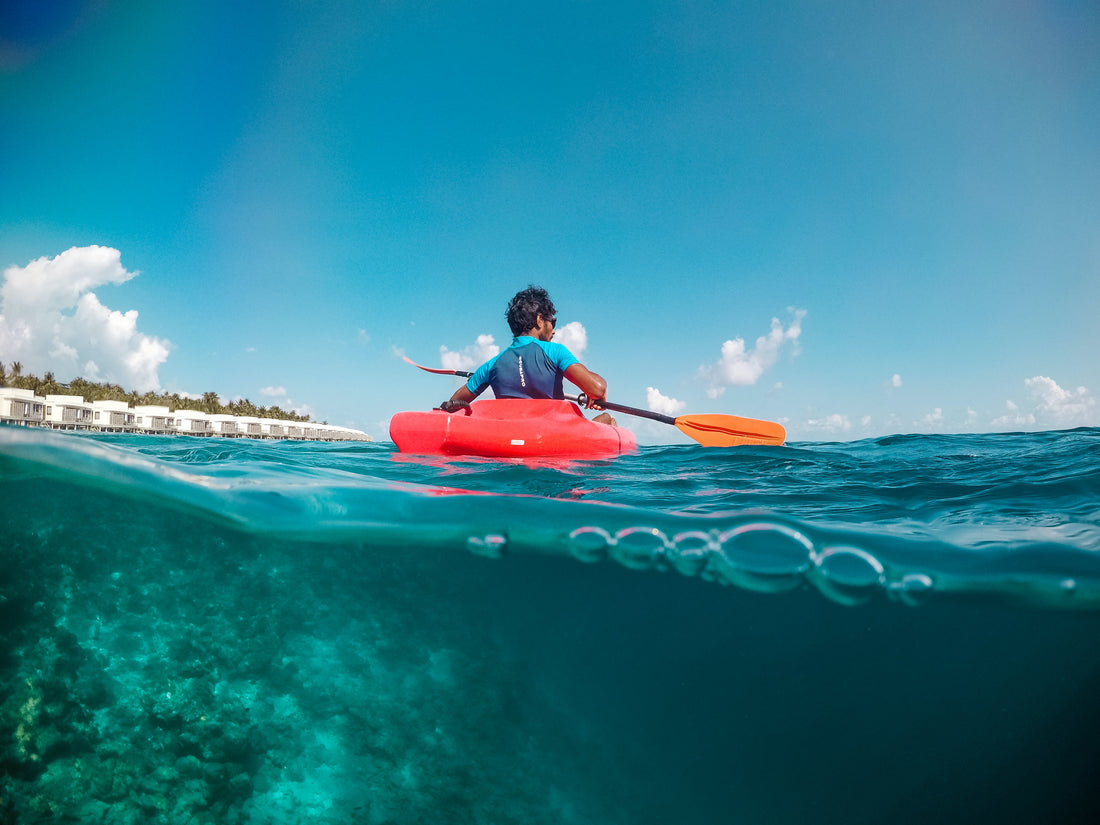
Kayaking and canoeing are popular water activities enjoyed by outdoor enthusiasts of all skill levels. To ensure the longevity and performance of your kayak or canoe, proper maintenance is crucial. In this article, we will provide you with a comprehensive guide on essential maintenance tips and routines to keep your vessel in optimal condition. By following these guidelines, you can enhance your paddling experience and extend the lifespan of your kayak or canoe.
-
Cleaning: Regular cleaning is essential to remove dirt, grime, and salt residue that can accumulate on your kayak or canoe. Rinse the vessel with fresh water after each use. Use a mild detergent and a soft sponge or cloth to gently clean the hull, deck, and other surfaces. Avoid using abrasive materials or harsh chemicals that could damage the kayak's or canoe's material. Cleaning the kayak thoroughly not only keeps it looking great but also prevents the buildup of corrosive substances.
-
Storage: Proper storage is key to protecting your kayak or canoe from damage. Store your vessel in a cool, dry place away from direct sunlight. Prolonged exposure to sunlight can cause the material to degrade over time. If outdoor storage is necessary, consider investing in a kayak or canoe cover to shield it from the elements. Additionally, store the vessel in a position that minimizes stress on the hull to avoid warping or deformation.
-
Inspection: Regular inspections help identify and address any potential issues before they worsen. Examine the hull, deck, seams, and hatches for signs of damage, such as cracks, dents, or leaks. Pay close attention to the areas most susceptible to wear and tear. If you notice any damages, promptly repair them using appropriate materials or seek professional assistance if needed. Addressing problems early on can prevent more extensive and costly repairs later.
-
Lubrication: To maintain smooth operation and prevent corrosion, lubricate the moving parts of your kayak or canoe. Apply a silicone-based lubricant to metal components like hinges, rudders, pedal systems, or any other adjustable features. This protects against rust and ensures proper functionality. Follow the manufacturer's recommendations for the appropriate lubricant to use and apply it as instructed.
-
Seat and Strap Maintenance: Your comfort and safety while paddling depend on well-maintained seats and secure straps. Inspect the seat attachment points, straps, and buckles regularly. Tighten loose connections and replace any worn-out or damaged straps or buckles. A secure and properly adjusted seat and straps enhance stability and control, providing an enjoyable paddling experience.
-
Paddle Maintenance: The paddle is an essential tool for kayaking and canoeing. Take care of it by rinsing and drying it after each use. Inspect the paddle blades and shaft for any cracks or damage. If adjustable, check the mechanisms to ensure they are functioning properly. Replace any worn-out or damaged paddles for optimal performance on the water.
-
Kayak Transport: When transporting your kayak or canoe, proper securing is crucial to prevent damage. Use specialized kayak straps or tie-downs to secure the vessel tightly to your vehicle's roof rack. Regularly check the straps during transportation to ensure they remain tight and secure. Avoid over-tightening, as it may deform the hull. Take caution when loading and unloading to prevent accidental drops or impacts.
-
UV Protection: Prolonged sun exposure can lead to fading, cracking, and degradation of the kayak or canoe's material. Protect your vessel by applying a UV protectant specifically designed for kayaks and canoes. Follow the manufacturer's instructions for application and reapplication. Regularly applying UV protectant safeguards your investment and maintains the aesthetics and structural integrity of your vessel.
-
Drainage: Many kayaks and canoes feature self-bailing scupper holes or drainage plugs to remove excess water. Ensure these drainage outlets are clear of debris or obstructions. Check them regularly to maintain proper drainage and prevent water accumulation inside the vessel. Proper drainage improves stability and keeps your kayak or canoe lightweight during your paddling adventures.
-
Follow Manufacturer Guidelines: Always refer to your kayak's or canoe's user manual and the manufacturer's guidelines for specific maintenance instructions. Each vessel may have unique maintenance requirements or recommendations. Adhering to these guidelines will help you keep your kayak or canoe in optimal condition.
Maintaining your kayak or canoe is essential for ensuring its longevity and performance. By following these maintenance tips and routines, you can protect your investment and enhance your paddling experiences. Regular cleaning, proper storage, diligent inspections, and appropriate lubrication are key aspects of kayak and canoe maintenance. By incorporating these practices into your routine, you'll be able to enjoy many memorable paddling adventures for years to come.
